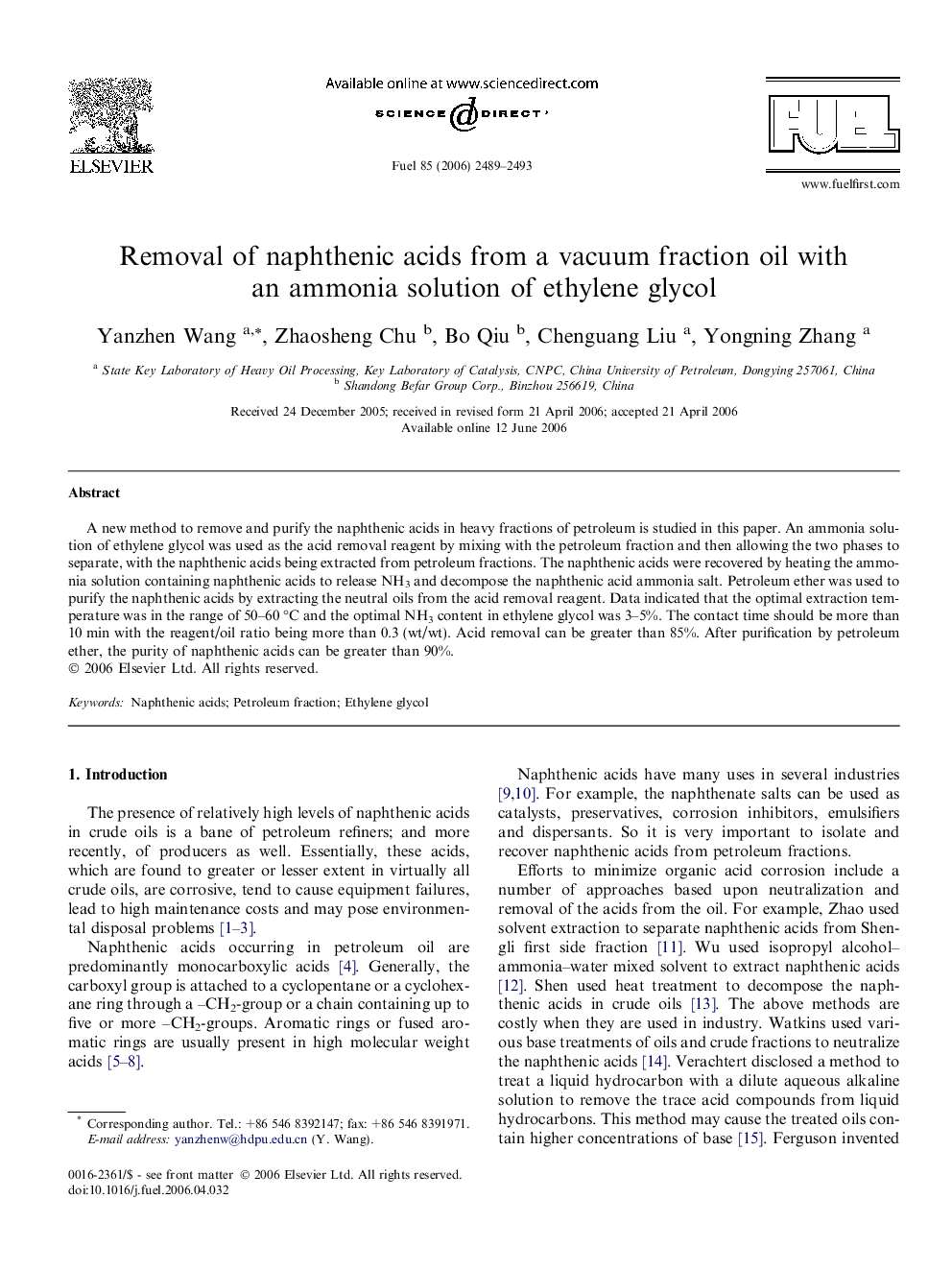| Article ID | Journal | Published Year | Pages | File Type |
|---|---|---|---|---|
| 208599 | Fuel | 2006 | 5 Pages |
A new method to remove and purify the naphthenic acids in heavy fractions of petroleum is studied in this paper. An ammonia solution of ethylene glycol was used as the acid removal reagent by mixing with the petroleum fraction and then allowing the two phases to separate, with the naphthenic acids being extracted from petroleum fractions. The naphthenic acids were recovered by heating the ammonia solution containing naphthenic acids to release NH3 and decompose the naphthenic acid ammonia salt. Petroleum ether was used to purify the naphthenic acids by extracting the neutral oils from the acid removal reagent. Data indicated that the optimal extraction temperature was in the range of 50–60 °C and the optimal NH3 content in ethylene glycol was 3–5%. The contact time should be more than 10 min with the reagent/oil ratio being more than 0.3 (wt/wt). Acid removal can be greater than 85%. After purification by petroleum ether, the purity of naphthenic acids can be greater than 90%.
